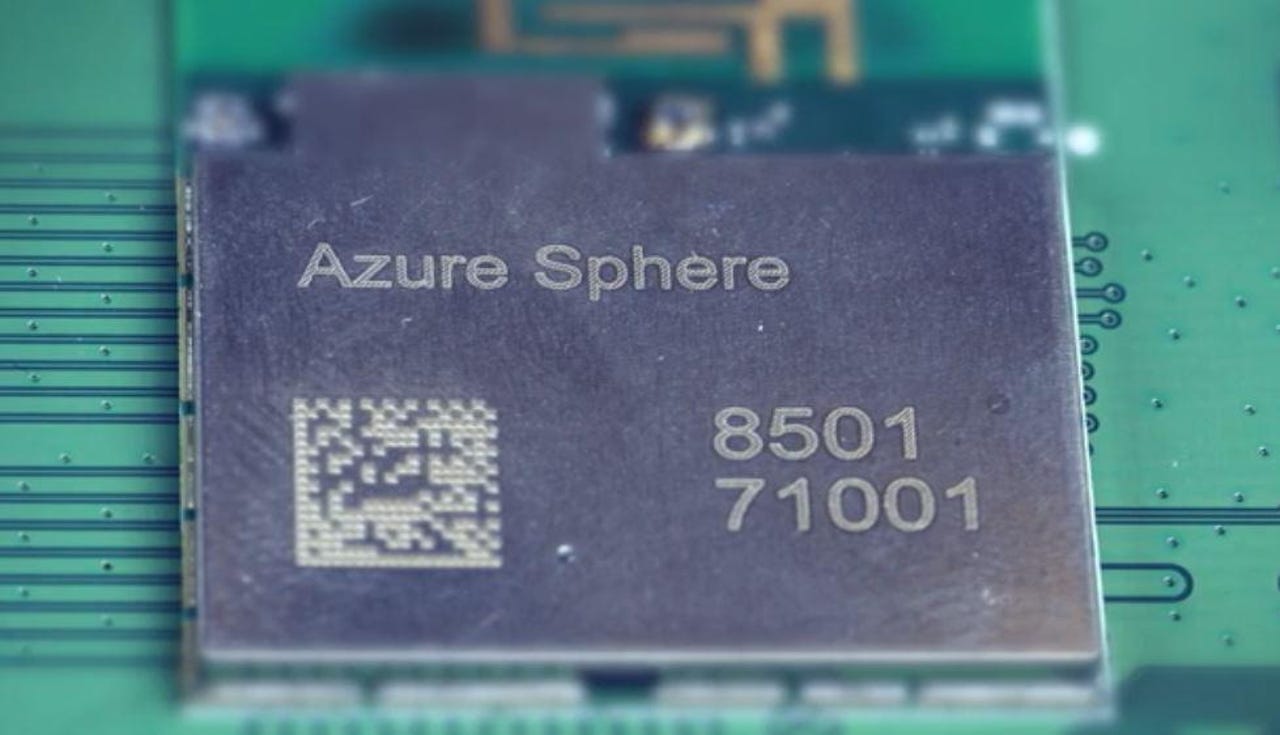Microsoft to deliver Azure Sphere, a Linux-based chip and cloud security service, in February 2020


More Microsoft
Microsoft officials said the company's Azure Sphere microcontroller (MCU) and associated cloud security service will be generally available in February 2020. Officials announced on October 28 at the IoT Solutions World Congress.
Microsoft also introduced new branding today for the ThreadX RTOS technology it acquired when it bought Express Logic in April 2019. Going forward, this product will be known as Azure RTOS. ThreadX is one of the most-deployed real-time operating systems in the world. Today, Microsoft said that Renesas, a major microcontroller manufacturer, announced that Azure RTOS will be broadly available across its products, including the Synergy and RA MCU families.
Microsoft has been working for at least a couple of years to secure low-cost Internet-connected devices. Microsoft Research's "Project Sopris" was all about creating a highly secure microcontroller. That project morphed into Azure Sphere, which Microsoft announced in April 2018.
The first Azure Sphere chip was the MediaTek MT3620, which included an onboard security subsystem Microsoft christened "Pluton." The Azure Sphere OS included a Microsoft-developed custom Linux kernel, plus secured application containers. The Azure Sphere Security Service provides authentication, threat response, and on-device and application failure information. In September 2018, Microsoft released its software development kit preview for Visual Studio for Azure Sphere. Officials said recently that an SDK for Linux and support for Visual Studio Code should be coming soon.
In June this year, Microsoft announced it would be working with NXP on another Azure Sphere-certified chip, the i.MX 8, which will be suited to artificial intelligence, graphics, and richer UI experiences, Microsoft execs said. Earlier in October, Microsoft also said it would be delivering along with Qualcomm the first cellular-enabled Azure Sphere-certified chip which will provide secure connectivity.
Microsoft officials said customers who have been using Azure Sphere in preview have used it to design and produce consumer appliances to retail and manufacturing equipment. The Azure Sphere-certified MediaTek MT3620 chips also are being used in "guardian modules" for securely connecting and protecting mission-critical equipment, officials said.
Azure RTOS is "complementary" with Azure Sphere, officials have said. Earlier this year, Microsoft provided a secured environment for existing code running on an RTOS or bare metal by enabling the M4 core processors that are inside the MediaTek MT 3620 chip.
"Our goal is to make Express Logic's ThreadX RTOS available as an option for real-time processing requirements on an Azure Sphere device and also enable ThreadX-powered devices to connect to Azure IoT Edge devices when the IoT solution calls for edge computing capabilities. While we recommend Azure Sphere for customers' most secured connections to the cloud, where Azure Sphere isn't possible in highly constrained devices, we recommend Express Logic's ThreadX RTOS over other RTOS options in the industry because of its additional certifications and out-of-the-box connectivity to Azure IoT Hub," a Microsoft spokesperson said.
Microsoft made several other announcements today at IoT Solutions World involving its existing IoT products. It added new application templates, API, multitenancy support and more features to its IoT Central managed IoT app platform. Azure IoT Hub is getting several new features and Azure Time Series Insights is getting a number of new preview features, including multi-layered and flexible cold storage; richer analytics; and improved scale and performance.